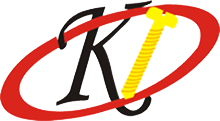
When you’re setting out to mount or hang picture frames, clocks, or cabinets onto walls for home improvement, whether they’re made of drywall, plaster, or masonry, screw anchors become your go-to hardware. They are especially useful for hanging heavy items securely.
Understanding Screw Anchors
In this section, you’ll learn about the different types of screw anchors and their specific components and materials, ensuring you choose the right one for your project.
Types of Screw Anchors and Where to Use
- Expansion Anchors: Expansion anchors, also called wedge anchors, which is designed to expand as you tighten the screw. Their deep threads provide an immersing grip in solid materials like concrete and stone.
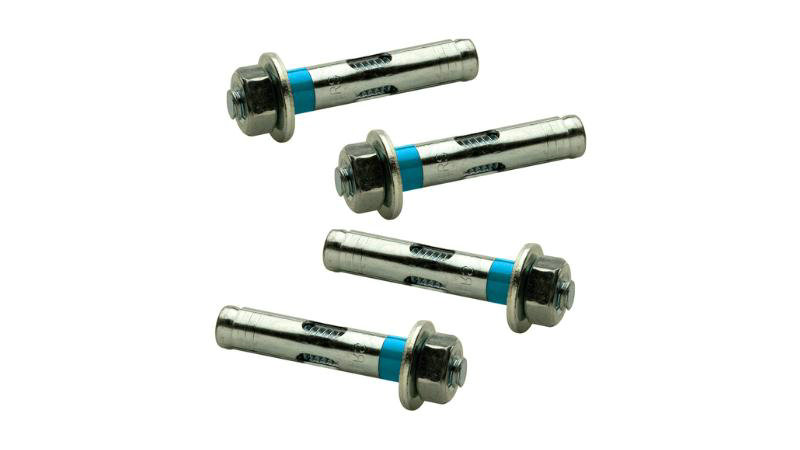
- Sleeve Anchors: Sleeve Anchors are versatile masonry expansion anchors. They consist of threaded studs. When they are expanded, the studs will tighten. They can be used to attach shelving to block walls.
- Toggle Bolts: Toggle Bolts feature a spring-loaded wing ( butterfly wing) that opens inside a cavity wall, ideal for heavy items on hollow walls. Toggle bolts are suitable for hollow doors or thin panels.
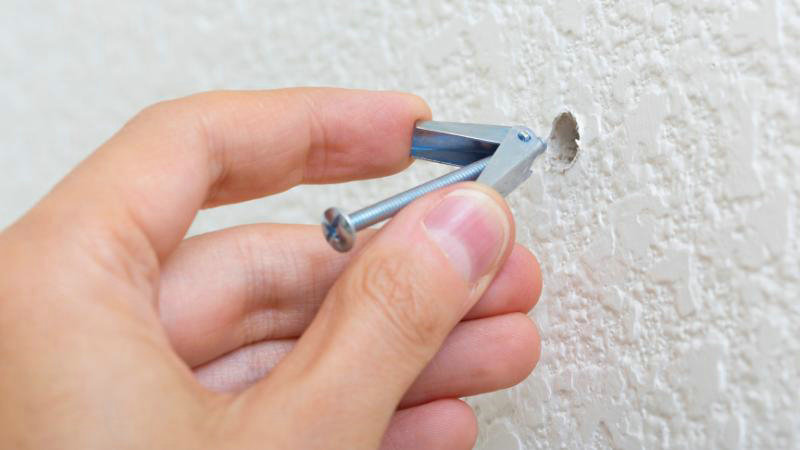
- Holly Wall Anchors: Holly wall anchors, also called molly bolts, expand behind the wall surface as you drive the screw into it, suitable for medium loads like mirrors and small pictures. It can be used on drywall, plaster, and thin paneling.
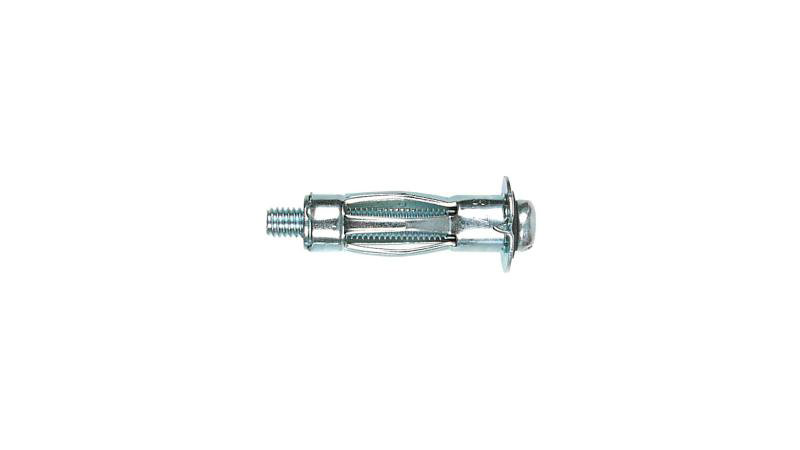
- Threaded Drywall Anchors: Strong anchors that can be screwed directly into drywall without pre-drilling.
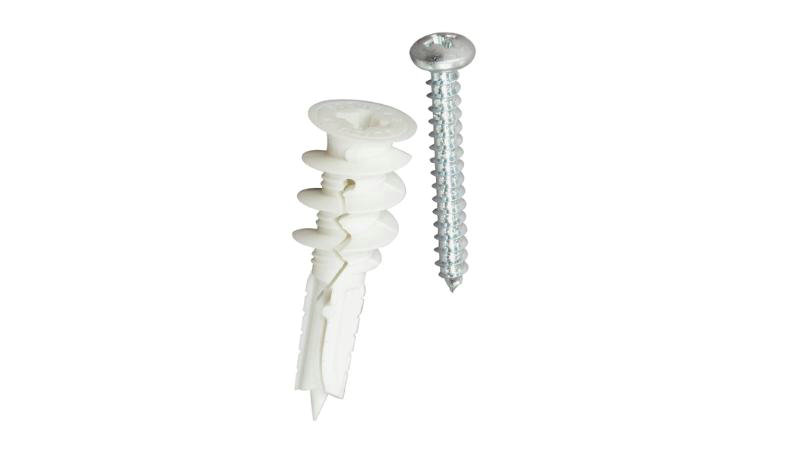
- Hammer Dive Anchors: Hammer drive anchors, also known as drive pin anchors, hit pins, or nail-in anchors, are light-duty fasteners used for permanently attaching objects to concrete, brick, block, or stone. Common uses include attaching drywall tracks, gutters, electrical boxes, and lightweight shelving to masonry surfaces.

- Plastic Expansion Anchors: Plastic expansion anchors, also known as conical anchors or ribbed plastic anchors, are light to medium-duty fasteners used for attaching objects to drywall, plaster, brick, concrete, stone, or tile. They are made of durable nylon or polypropylene and typically have ridges or rings along the shaft for added holding power. Common uses include hanging pictures, mirrors, shelves, curtain rods, and towel bars.
- Chemical Anchors: Chemical anchors, also known as adhesive anchors or epoxy anchors. They are often used in critical load-bearing applications such as structural steel, heavy equipment, and seismic retrofitting.
- Acoustical Wedge Anchors: Acoustical wedge anchors are a specific type of wedge anchor designed for fastening acoustical systems, such as suspended ceiling grids or sound-dampening panels, to concrete ceilings or walls.

Materials Used on Anchors
Materials: Anchors are often made from different materials based on the required strength and environment.
- Plastic: Commonly used for lightweight tasks.
- Stainless Steel: Durable, resistant to rust, suitable for both indoor and outdoor use.
- Metal: Can vary from soft to very hard, used for medium to heavy-duty applications.
Selecting the right screw anchor is crucial for your project’s stability and safety. Be specific about the weight of the item you’re hanging and the type of wall surface you’re dealing with to ensure a secure hold.
How to Install Screw Anchors
Selecting the Right Drill Bit
To install screw anchors, you need to drill a pilot hole.
- For pre-drilled holes, match the diameter of the drill bit to the size of the hole recommended by the anchor manufacturer.
- Masonry screws require a bit that creates a slightly smaller diameter hole than the screw itself to ensure a tight fit.
Consider the type of drill you’re using:
- A power drill provides the strength required for tougher materials.
- A hammer drill is ideal for concrete or masonry, where it can ease the screwing of an anchor into a solid surface.
Using a Stud Finder
Locating wall studs is an important step if you’re not using a drywall anchor or if the item is too heavy and needs additional support:
- Use a stud finder to detect studs behind the wall. They come in handy, especially for heavy items that require extra support.
- Wall studs are generally spaced 16 to 24 inches apart, and securely mounting into a stud can often negate the need for drywall anchors.
Always ensure you use a level to keep your item straight when marking your drill points on the wall.
Having a screwdriver on hand, be it manual or powered, is a must for driving the screws into the anchors once they are in place.
Selecting Screw Anchors for Different Surfaces
Choosing the right screw anchor is essential for the stability and durability of your fittings. Whether you’re working with drywall or masonry, selecting an anchor that matches the surface type and the weight of the item you’re securing will ensure a successful installation.
Anchors for Drywall
Drywall is a common but relatively fragile surface, requiring special anchors that spread the load over a larger area. Just use drywall anchors is a good choice. For light items, simple expansion anchors that press against the drywall are usually sufficient. For heavier objects, consider using a toggle bolt or molly anchors. These expand behind the drywall, creating a stronghold. If you’re positioning very heavy items, locate the studs in the wall and secure the item directly into the wood, as this provides the most stability.
Types of Anchors for Drywall:
- Expansion Anchors
- Toggle Bolts
- Molly Anchors
When dealing with masonry surfaces such as concrete or brick, you need to choose screw anchors that can handle the hard material and potential load. Masonry anchors usually expand to latch onto the material or may be sleeve-type anchors that create friction. For light to medium fixtures, a plastic expansion anchor can be adequate. However, for heavy or critical loads, consider using sleeve anchors, wedge anchors, or metal screw anchors that are designed to expand within the masonry material and are made from materials such as stainless steel to resist corrosion.
Types of Anchors for Masonry:
- Plastic Expansion Anchors
- Sleeve Anchors
- Wedge or Metal Screw Anchors
Maintenance and Removal Screw Anchors

This section guides you on how to safely extract drywall anchors—a common fastener used for mounting shelves and other items to walls.
How to Remove Drywall Anchors
- Toggle Bolt: This type consists of a winged anchor and a matching bolt. To remove them, you need to:
- Unscrew the bolt until it’s loose enough.
- Push the bolt back slightly so the toggle can collapse behind the drywall.
- Gently pull on the bolt until the toggle comes out through the hole.
- Molly Bolt: For molly bolts, follow these steps:
- Remove the screw from the molly bolt.
- Use a pair of needle-nose pliers to grip and pull the metal sleeve of the molly bolt out.
- Sleeve Anchors and Threaded Anchors: These anchors are removed by:
- Unscrewing them carefully with the appropriate screwdriver or drill bit.
- If they’re stuck or spinning, apply gentle pressure with pliers while continuing to unscrew.
- Repairing the Wall: Once the drywall anchor is removed, you’ll likely be left with a hole to patch. Use wall material-specific filler to close the hole, smoothing it out to ensure the wall surface is ready for repainting or refinishing.
Always remember to select the right tools for the job—having a drill, screwdriver, hammer, and pliers can make removal more straightforward. By following these steps, you’ll keep your walls in good shape and ready for your next project.
Frequently Asked Questions
When is it necessary to use an anchor with screws?
It’s necessary to use an anchor with screws when you’re attaching something to drywall or a hollow wall without a stud behind it, as the wall alone can’t support the weight. Anchors provide the necessary grip by expanding or biting into the wall material.
What are the best practices for installing screw anchors into concrete?
When installing screw anchors into concrete, first, use a hammer drill to create a hole using a masonry bit that matches the anchor size. Clean out the hole of debris, insert the anchor, and then drive the screw into the anchor, ensuring a snug and secure fit.
How do ceiling screw anchors work, and what are they used for?
Ceiling screw anchors work by expanding against the inner surface of the ceiling material, providing a secure anchoring point. They are used for hanging objects like plants, light fixtures, or decorations where there’s no access to ceiling joists.
